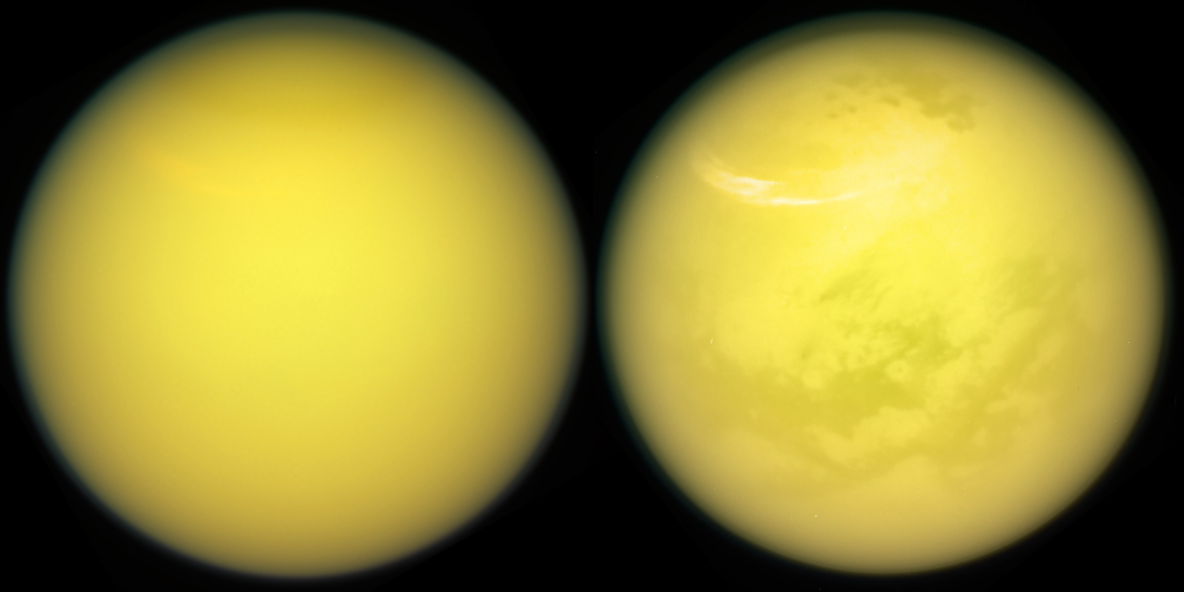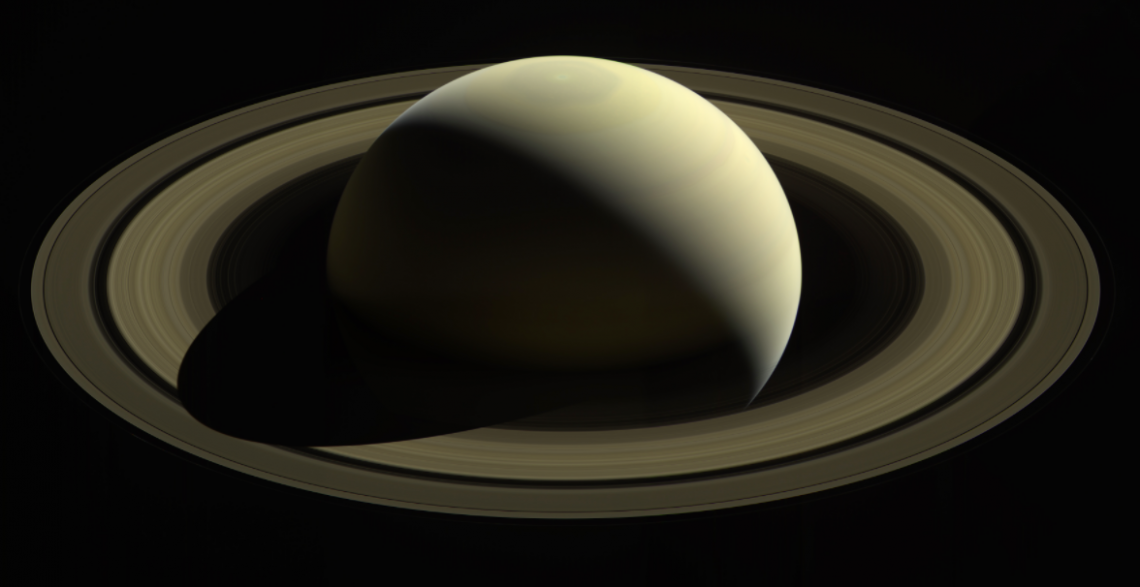aNewDomain  — It wasn’t supposed to end this way.
— It wasn’t supposed to end this way.
When Cassini inevitably ran out of fuel, as it did this month, scientists thought they’d just sent Cassini over to a nice, retiring orbit around Jupiter or Uranus.
That plan changed back in April, when they chose instead to let Cassini crash and burn in the atmosphere of Saturn. And in the early hours of Sept. 15, 2017, that’s exactly what happened. As millions followed its death march online and on NASA TV, the robotic spacecraft NASA, the European Space Agency and the Italian Space Agency launched in 1997 made a final, fiery plunge through the ringed planet’s atmosphere.
It burned up, of course, but not before it scored some closer than ever photos of those rings and the planet itself.
That, after all, was exactly the point. In its impact course with Saturn, which NASA set in motion back in April, Cassini got its closest ever look at Saturn’s rings and of the planet itself.
It was a fitting ending to a spectacular mission, which led to such high-profile discoveries as the presence of a liquid methane sea on Saturn moon Titan and of active geysers on Enceladus, another of its 61 moons. But it wasn’t just the eighth planet and its storied rings that Cassini shed light on.
“Perhaps most importantly, [Cassini] illuminated processes and forces that shaped the early days of the solar system—forces that have made our planet what it is. It’s given us new candidates for where life might exist, and what it might look like if we find it,” a NASA spokesperson said in a statement today.
We can’t wait to see where the Cassini data leads. But for now, why not take a long, leisurely look at some of the most spectacular images Cassini captured during its 22 dives along its collision course? Here are some of our favorites among Cassini’s final photos.
Death Day
Let’s start with this image, which was created by data from Cassini’s visual and infrared mapping spectrometers. It captures the point where Cassini entered Saturn’s atmosphere on its final day, Sept. 15, 2017.

Saturn Before the Plunge
Cassini snapped this image of Saturn’s northern hemisphere on Sept. 13, 2017, right before it began its plunge through its atmosphere. It is lit by visible red light, thanks to Cassini’s wide-angle camera. It was shot at a distance of 684,000 miles (1.1 million kilometers) from Saturn.

Swan Song
This monochrome view of Saturn, which captures its night side, is the last image Cassini took on its Sept. 15 2017 plunge toward the planet’s surface. The image is lit solely by reflected light from the planet rings. The image also reveals where Cassini would enter the planet’s atmosphere for its death dive, hours later.
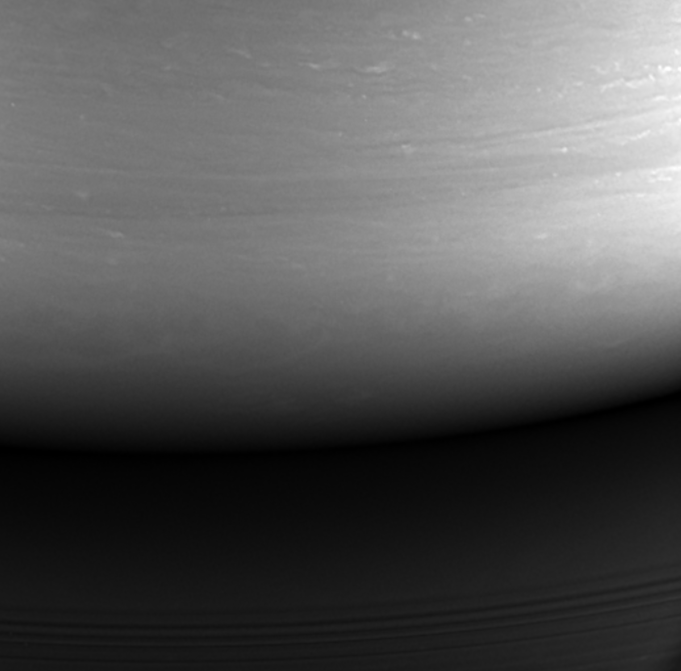
Saturn’s A-Ring
Taken by Cassini spacecraft on Sept. 13, 2017, this was one of the last images Cassini sent to Earth. It’s a view of Saturn’s A ring. The lone “propeller,” says NASA, was created by one of the countless tiny moons (moonlets) that are embedded in the rings.

Titan
On its final tour of the Saturnian system, Cassini nabbed this view of Titan, Saturn’s big moon.

The Ultimate Saturn Beauty Shot
This is one of the final long distance shots Cassini grabbed of Saturn and its main rings.
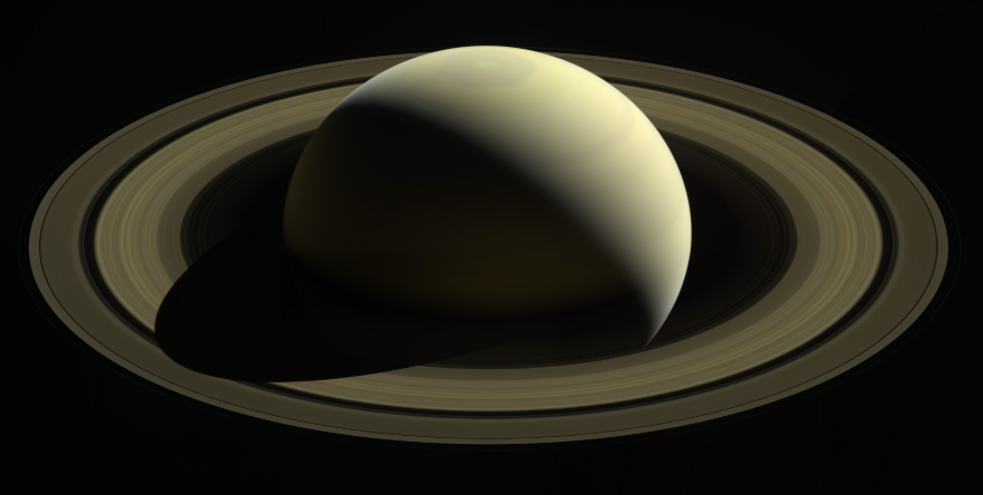
A View of Enceladus
Cassini has been monitoring little Enceladus for several years. The tiny moon, which is just 313 miles across, features plumes that scientists now know are from active geysers. What a beauty shot.
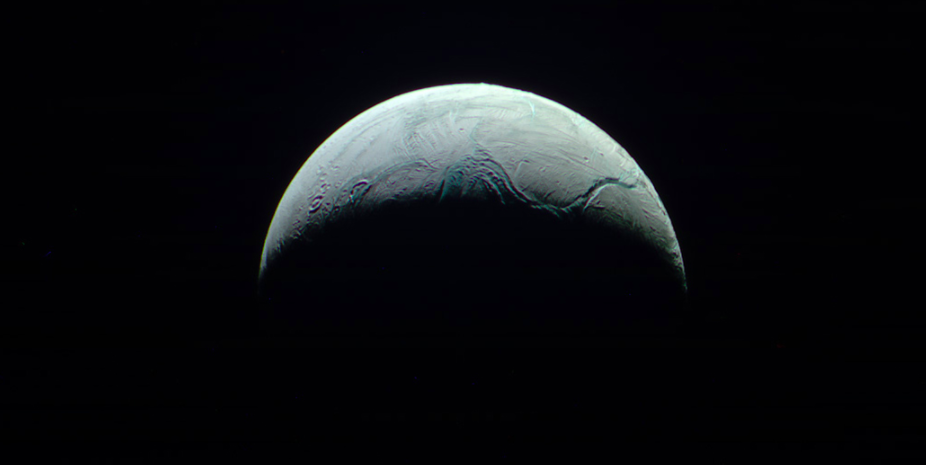
Tethys by Saturnshine
Here’s a wonderful shot Cassini captured of its icy moon, Tethys. It’s illuminated by Saturnshine — that is, sunlight that the planet reflects. And look at those icy rings.

- Top of the World: These turbulent clouds are on top of the world at Saturn.
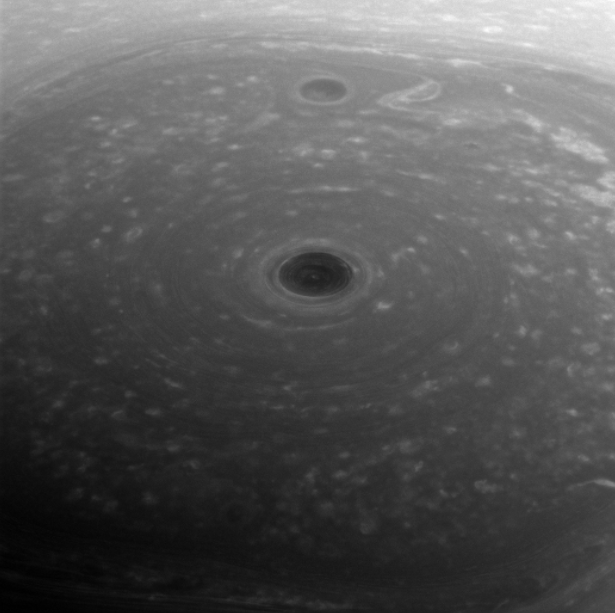
Saturn cloud forms
Clouds on Saturn look like someone added them with a cosmic paintbrush in this colorized Cassini image. The effect is due to the way fluids interact in Saturn’s atmosphere, say scientists.

Double Titan
Here are two views of Saturn’s moon Titan, as captured by Cassini in its final days aloft.
